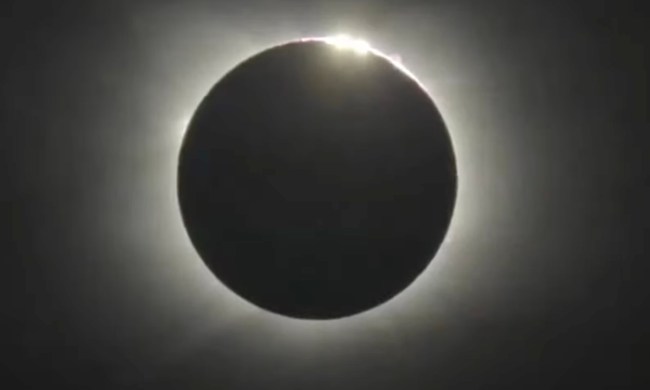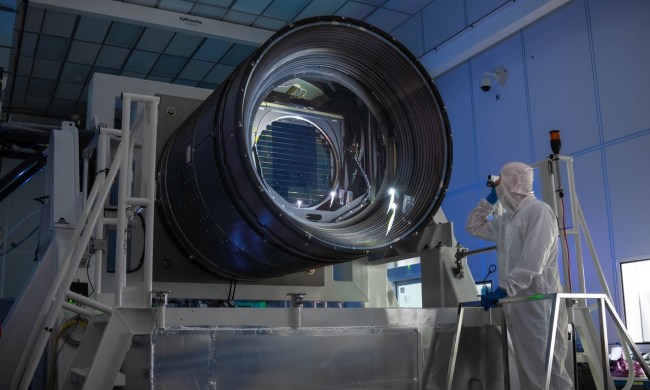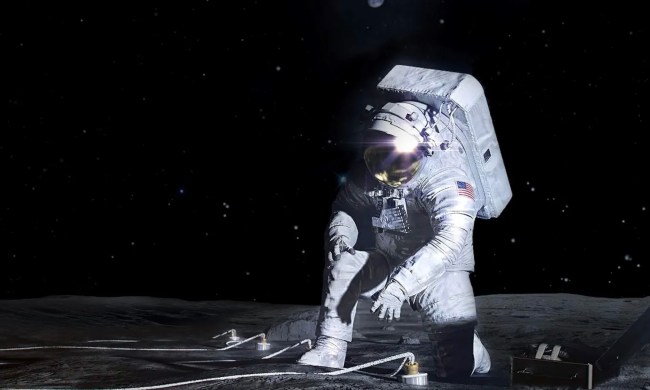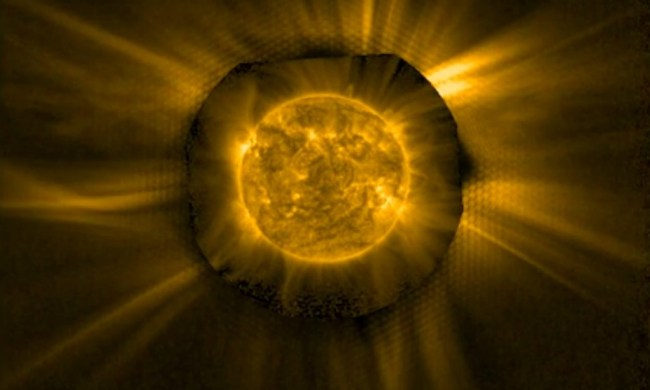
Watch ULA’s triple-booster Delta IV Heavy roar to space for the final time
Watch ULA's triple-booster Delta IV Heavy take final flight.

ULA’s Delta IV Heavy rocket is about to take its final flight
After a scrubbed launch last month, United Launch Alliance is expected to send its Delta IV Heavy rocket on its final flight on Tuesday.

When is the next total solar eclipse?
Monday's total solar eclipse in the U.S., Canada, and Mexico has been and gone. So when is the next chance to experience this spectacular celestial phenomenon?

The first views of the eclipse are coming in, and they’re stunning
Eclipse mania is gripping swaths of the U.S. today as a total solar eclipse passes across the country from Texas to Maine.

Watch SpaceX blast its megarocket engines in spectacular test
SpaceX has performed a spectacular static fire test of its Super Heavy booster, firing all 33 Raptor engines ahead of its fourth test flight.

Total solar eclipse: NASA’s most important piece of advice
The next total solar eclipse is just hours away. NASA wants everyone to enjoy it, but has some important advice on how to do it safely.

First indications of a rare, rainbow ‘glory effect’ on hellish exoplanet
Researchers believe they may have identified a set of rainbow-like colorful rings, called a glory, on a planet outside our solar system for the first time.

Is dark energy changing over time? A new survey suggests it could be
New results from a survey into dark energy show a look back 11 billion years into the past, with the largest ever 3D map of the universe.

What kind of view will ISS astronauts get of the solar eclipse?
Astronauts aboard the International Space Station some 250 miles above Earth are eagerly awaiting Monday's total solar eclipse.

SpaceX shares stunning night shot of its Super Heavy booster
SpaceX has just released a stunning image of its powerful Super Heavy rocket on the launchpad with a dramatic star-filled sky as the backdrop.

These 3 companies are developing NASA’s new moon vehicle
Today, NASA announced the three companies that will be developing its new lunar vehicle: Intuitive Machines, Lunar Outpost, and Venturi Astrolab.

James Webb images capture the galactic winds of newborn stars
A stunning new pair of images from the James Webb Space Telescope show a new view of a familiar galaxy: Messier 82.

The world’s largest digital camera for astronomy is ready to go
Ready to scan the night sky for evidence of dark matter and to identify near-Earth asteroids, the camera for the upcoming Vera Rubin Observatory is complete.

NASA reveals target date for first crewed Starliner flight
NASA and Boeing are making the final preparations for the long-awaited and much-delayed maiden crewed flight of the CST-100 Starliner spacecraft.

The solar eclipse isn’t the only thing to enjoy in the skies in April
The total solar eclipse is definitely the main event this month, but there's also plenty more for skywatchers to enjoy over the coming weeks.

Final Delta IV Heavy launch scrubbed minutes before liftoff
An attempt to launch ULA's Delta IV Heavy rocket for the final time was scrubbed on Thursday with a little under four minutes remaining on the countdown clock.

The ‘Devil Comet’ will be visible during the solar eclipse in April
Not only will April bring a rare total solar eclipse, but there's also the chance to view the dramatically named Devil Comet.

Stunning image shows the magnetic fields of our galaxy’s supermassive black hole
The Event Horizon Telescope collaboration, the group that took the historic first ever image of a black hole, is back with a new stunning black hole image.

NASA astronauts will try to grow plants on the moon
Among three experiments heading to the moon as part of the crewed Artemis III mission will be a plant-growth study, NASA has announced.

Euclid space telescope’s vision cleared thanks to deicing
The Euclid Space Telescope is fully operational after a deicing procedure removed small amounts of water ice from its mirror.

How to watch the final launch of ULA’s mighty Delta IV Heavy rocket
United Launch Alliance is about to launch its Delta IV Heavy rocket for the final time. Here's how to watch a live stream of the mission getting underway.

April’s solar eclipse may produce an unexpected consequence
A total solar eclipse will take place in the U.S. on April 8, and researchers have just drawn attention to something about it that you may not have considered.

How to safely watch April’s total solar eclipse, in person or online
Next month will see a rare and exciting astronomical event: a total solar eclipse that will be viewable across much of North America. Here's how to watch it.

Hubble captures the dramatic jets of a baby star
A new image from the Hubble Space Telescope shows the drama that unfolds as a new star is born.

Watch SpaceX fire Starship’s Raptor engines ahead of 4th test flight
SpaceX performed a full-duration static fire of the Starship spacecraft's Raptor engines on Monday, and shared a video of the dramatic test on social media.

How to photograph April’s solar eclipse, according to NASA
NASA has shared some photography tips for folks keen to record next month's solar eclipse — and they don't all involve capturing the eclipse itself.

Hubble images the spooky Spider Galaxy
A recent image from Hubble shows an irregular galaxy, the spindly arms and clawed shape of which has led to it being named the Spider Galaxy.

Russian Soyuz on its way to ISS after being delayed due to electrical issue
A trio of crew members are on their way to the International Space Station on a Soyuz spacecraft following a rescheduled launch caused by an electrical issue.

How to photograph April’s solar eclipse, according to Nikon
Excitement is building for next month’s total solar eclipse, and Nikon is offering some photography tips for folks keen to document the event.

Around-the-clock 4K Earth imagery to be streamed from ISS
The space station is to take delivery of several ultra-high-definition cameras that will offer free access to live-streamed Earth imagery from 250 miles up.

Crewed Soyuz launch to space station suffers rare late abort
The latest crewed launch of Russia’s usually reliable Soyuz rocket was called off just seconds before liftoff on Thursday.

Here’s the new science that’s launching to the ISS today
Today will see the launch of not only a group of astronauts visiting the ISS, but also a uncrewed cargo mission sent to resupply the station.

Help NASA in its quest to learn more about our sun
NASA is asking for volunteers to take part in research during April's total solar eclipse that will help it learn more about our sun.

SpaceX already has a date in mind for next Starship launch
SpaceX is keen to cut the waiting time between Starship flights and says it should be ready to fly the rocket again soon. But the FAA will have the final say.